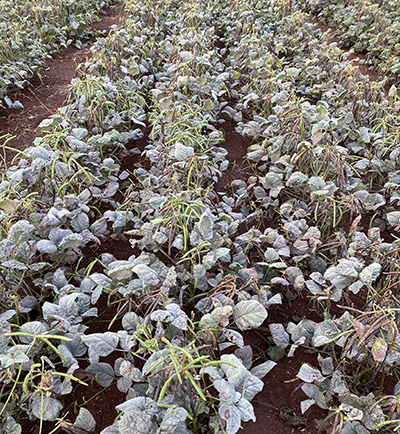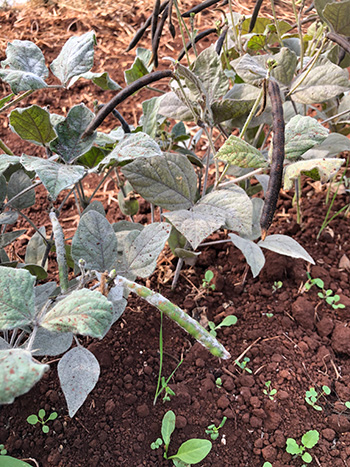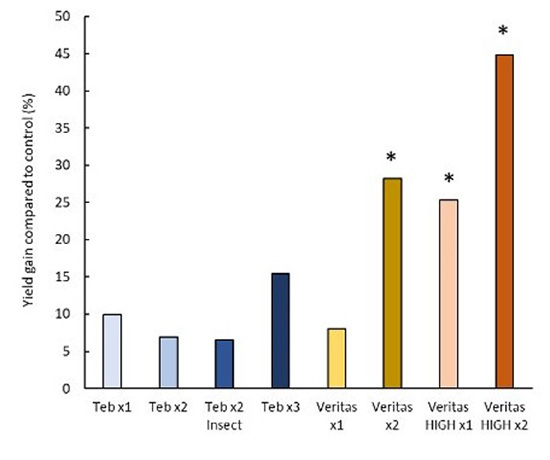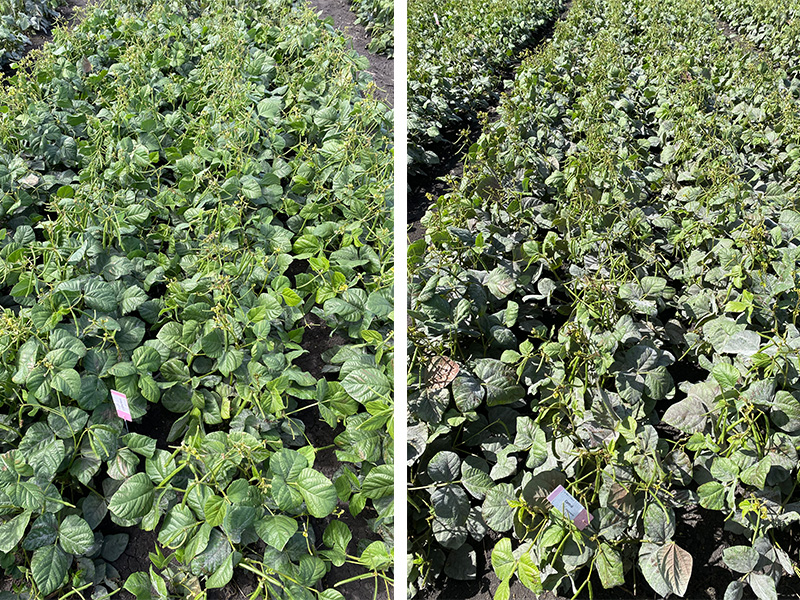Paddock Practices: Reduce the impact of mungbean powdery mildew
Paddock Practices: Reduce the impact of mungbean powdery mildew
Date: 05 Feb 2025

Key points
- Sow early in summer and plan fungicide applications to manage mungbean powdery mildew.
- Use the PowderyMildewMBM app to check whether to spray mungbeans for powdery mildew. Only spray for economic benefit. “Don’t spray if it won’t pay.”
- Fungicide products with actives from two Mode of Action groups are usually better.
- Preventive spraying won’t work. Don’t spray before seeing powdery mildew in the paddock.
Sow early to avoid conducive conditions for mildew
Powdery mildew is commonly seen during the cropping season. It occurs in all regions where mungbeans are grown in Australia. In Queensland and northern New South Wales, disease outbreaks are usually common from early autumn in summer planted crops. Typically, epidemics develop as soon as temperatures drop during the season.
Disease development is favoured by cool (22 - 26°C), dry weather and is often more prevalent during the autumn in ‘late planted’ crops.
Cause and symptoms of mildew
Powdery mildew is caused by two fungal species, Podosphaera xanthii and Erysiphe vignae. Both pathogens appear the same and sometimes occur on the same leaves.
The initial symptoms are small, whitish spots that usually appear first on the lower canopy.
Under conducive conditions, these powdery mildew colonies can rapidly spread to cover large parts of the leaves, leaf petioles, stems and green pods later in the season.
Potential grain yield losses from powdery mildew
Recent replicated trials have indicated that powdery mildew can cause grain yield losses of up to 40 per cent, if:
- epidemics develop before flowering
- weather conditions favour infection throughout the growing season
- fungicide sprays are not applied for disease management.
In contrast, infections that appear after flowering usually do not have a considerable impact on grain yield.
The disease might also impact harvest efficacy: desiccant uptake can be reduced if leaves and stems are heavily infected with powdery mildew.
What this means for growers: Early sowing could be the best way of managing this disease without any fungicide treatments. Sowing early in the summer season often means that the crop gets to the green pod stage before powdery mildew becomes widespread in paddocks.

Choosing fungicides to manage powdery mildew
Recent University of Southern Queensland trials compared the efficacy of two fungicide products registered for use in mungbean powdery mildew management:
- tebuconazole
- various products (eg: Orius 430 SC Fungicide (430 g/L tebuconazole)
- azoxystrobin + tebuconazole
- (Veritas Opti Fungicide (222 g/L azoxystrobin + 370 g/L tebuconazole)
In 2024, the first symptoms appeared before or during flowering in all trials. The drier than average summer and cooler than average autumn conditions were conducive to the disease until harvest.
Treatments with the fungicide products resulted in improved grain yield responses in all validation trials. For example, for Tebuconazole, the grain yields improved on average from four to five per cent compared to the control and for azoxystrobin + tebuconazole the gain ranged from 10 to 30 per cent. The PowderyMildewMBM app predicted grain yield and financial gain at the time of the experimental fungicide applications, which was then supported by yield data.
In 2023, powdery mildew was first detected at late flowering in all replicated validation trials. The 2023 summer season and the beginning of autumn were unusually hot, which delayed infection and restricted disease severity during the rest of the growing season.
Treatments with both fungicide products resulted in significant reduction of both incidence and severity of the disease, but there was no significant grain yield response to the treatments. The app did not predict yield gain at the time of the experimental fungicide applications, and trial outcomes supported the app predictions.
The product with two actives that belong to two different Mode of Action (MoA) groups of fungicides performed significantly better in all the replicated validation trials.

Currently, all commercially available mungbean varieties are susceptible to some extent to powdery mildew. Fungicide applications may be needed for powdery mildew management in all varieties.
Resistance and susceptibility among common varieties:
- Jade-AU and Crystal are considered moderately susceptible to powdery mildew infection
- Green Dragon and Green Taipan are often infected with powdery mildew
- Opal-AU is rated as moderately resistant

This GRDC Paddock Practices was produced in collaboration with the University of Southern Queensland, the Queensland Department of Agriculture and Fisheries, and the Western Australian Department of Primary Industries and Regional Development (DPIRD).
Useful resources
- GroundCover article: App helps mungbean growers manage powdery mildew (GRDC GroundCover Online, January 2025)
- GroundCover article: Hold the spray when it comes to powdery mildew (GRDC GroundCover North, Issue 170, May-June 2024, Page 42)
- GRDC Podcast: Mungbean powdery mildew; fungicide sensitivities and management for Queensland growers (Feb 2024)
- GRDC Update Paper: Management of mungbean powdery mildew (July 2024)
Contacts
Levente Kiss
University of Southern Queensland, Centre for Crop Health
Levente.Kiss@unisq.edu.au
04 7352 4788
Lisa Kelly
Queensland Department of Primary Industries
Lisa.Kelly@daf.qld.gov.au
04 7774 7040
GRDC Project Code: USQ2202-001RTX,
